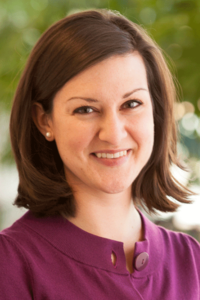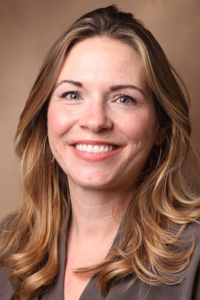Telehealth has proven to be effective for diabetes management because treatment of the disease is driven by data, which can be accessed remotely, said Leslie A. Eiland, MD, Assistant Professor of Medicine and Medical Director of the Endocrine Telehealth Program, University of Nebraska Medical Center.

“Very rarely do we change a treatment regimen based on a physical exam finding, if ever,” she said. “So this is absolutely something that we can continue to do if the Centers for Medicare & Medicaid Services (CMS) regulations around telehealth remain after the pandemic.”
Dr. Eiland will discuss the use of diabetes technologies for remote monitoring in ambulatory/rural settings during the symposium Remote Monitoring and Use of Telehealth—Lessons Learned from a Pandemic, which will begin at 4:30 p.m. ET Sunday, June 27. She will share real-world insights for obtaining diabetes-related data from patients and making treatment decisions via virtual visits.
Dr. Eiland’s Endocrine Telehealth Program has conducted telehealth clinics at rural community hospitals for eight years. In the program, staff at the rural facilities transmit patient data to off-site physicians. During the pandemic, CMS eased its restrictions on telehealth coverage, allowing patients to participate in virtual visits from their homes, which heightened convenience but removed the extra patient support from clinic staff.
Dr. Eiland said prepandemic data from her clinics indicate that the longer patients with type 1 diabetes are seen in the rural telehealth clinics, A1C continues to decline, irrespective of whether new technology is added to the regimen or whether the previous diabetes management was through a primary care provider or endocrinologist. The findings are based on 139 patients who were followed an average of 2.5 years.
“We feel this data supports the concept that telehealth for people with diabetes can be a long-term care solution, not just a temporary measure during a pandemic,” Dr. Eiland said.
Patients like home-based telehealth visits because they don’t have to account for travel time and they enjoy the comfort of being in their own space, Dr. Eiland said. But she cautioned that telehealth does not automatically produce equitable access to care.
“A successful home visit assumes a lot,” she said, including a high degree of digital literacy, internet access with a stable connection, and access to a connected device with a webcam. “Many of my patients do not have all of those things.”

Lindsay S. Mayberry, PhD, MS, will discuss the use of remote monitoring and other interventions to reduce health disparities in diverse ethnic/racial communities.
“We have done a lot with patient portals and web applications, because we can do a lot with them and we’re protected via encryption and log in,” said Dr. Mayberry, Associate Professor of Medicine and Director of Effective Health Communication Core, Vanderbilt University. “But when we do that, we systematically see that the people most at need for these proactive supports are not logging in.”
She supports the use of web-based systems that a family or community member can help the patient navigate without significant roadblocks, similar to systems used for COVID-19 vaccination sign-ups, as one possible path toward a solution.
“As we define and shape telehealth, we have to be careful not to define it restrictively to make billing and everything easier for us, because that will reduce access for groups that are less online,” she said. Instead, solutions should employ technology like text messaging and phone calls that are already used by the populations providers are trying to reach.

In addition to facilitating routine diabetes care, remote health care can be effective for managing diabetes emergencies like hypoglycemia, hyperglycemia, and early diabetic ketoacidosis (DKA), said Irl B. Hirsch, MD, Professor of Medicine, University of Washington Medicine Diabetes Institute.
“Most people who are most at risk for a metabolic emergency at home are not prepared for it,” he said. “One of the things the pandemic has done, because we’ve seen so much DKA, is it’s forcing us to be better prepared than we have been.”
New mobile apps and continuous ketone monitors are being developed to add even more preparedness.
“The hope is that we are able to use continuous ketone monitoring to help know when we have to bring the patient in for further evaluation for a potential ketoacidosis,” Dr. Hirsch said. “The potential use of continuous ketone monitoring both in diabetes and outside diabetes is tremendous, especially when one thinks about sodium-glucose cotransporter-2 (SGLT2) inhibitors and type 1 diabetes, pregnancy with either type 1 or type 2 diabetes, and the list goes on and on.”
Moshe Phillip, MD, Director of the Jesse and Sara Lea Shafer Institute of Endocrinology and Diabetes at Schneider Children’s Medical Center of Israel, will discuss advanced telehealth for diabetes digital visits. And Korey K. Hood, PhD, Professor, Departments of Pediatrics and Psychiatry & Behavioral Sciences, Stanford University School of Medicine, will discuss the impact of telehealth on quality of life.
VIEW THIS PRESENTATION
Already registered?
View this presentation at ADA2021.org
Not yet registered?
Register now to access all presentations from the Virtual 81st Scientific Sessions